The year is 2063 and over breakfast people are beaming up their digital daily editions of Hagerty news. The first headline reads: Valkyrie Found With Delivery Miles. That, for reasons that we’ll get to in a bit, would be a lamentable scenario, but it’s also an entirely plausible scenario because in 2023 the Valkyrie must surely be being viewed as a blue chip investment opportunity to be set aside in a climate-controlled chamber until the time is right to return it to market.
What’s more, I think this outlook will only increase when more people begin to realise just what a bargain the first 235 owners of the Valkyrie road cars (150 Coupés, 85 Spiders) have got. Because the more you learn about the development of the two-seat, carbon-fibre hypercar, the more you appreciate that if Aston Martin were to set the price now, rather than back in 2016, it would surely charge considerably more than £2 million (plus taxes).

Why? Because the level of engineering that has gone into building a hypercar that is infused with the latest thinking from motor racing but will be legally allowed to be driven on the road – and the challenges these opposing forces present – is extraordinary, and partly why it takes more than 2000 man-hours to build each car.
Adrian Newey, the Red Bull F1 team’s design genius, envisaged a car with amazing aerodynamic capabilities but which consequently required packaging tighter than a shrink-wrapped miser’s wallet. This had ramifications throughout the gestation of the car. There are the obvious things like the small but ferocious, naturally-aspirated V12 which produces 1001bhp, revs to 11,100rpm yet also conforms to Euro 6 emissions regulations. Well done Cosworth.
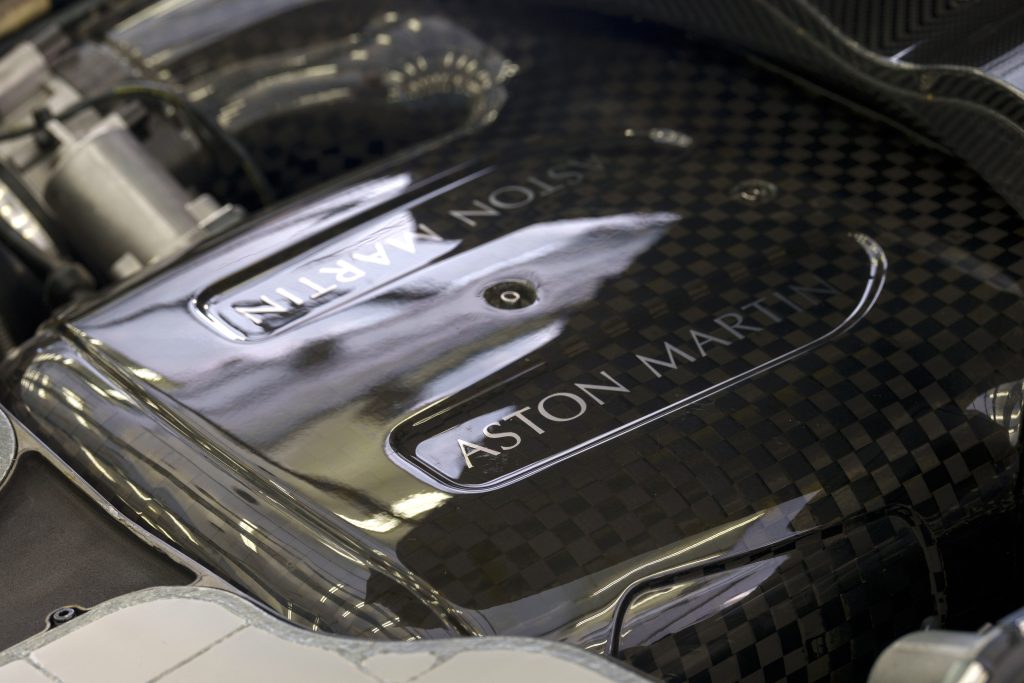
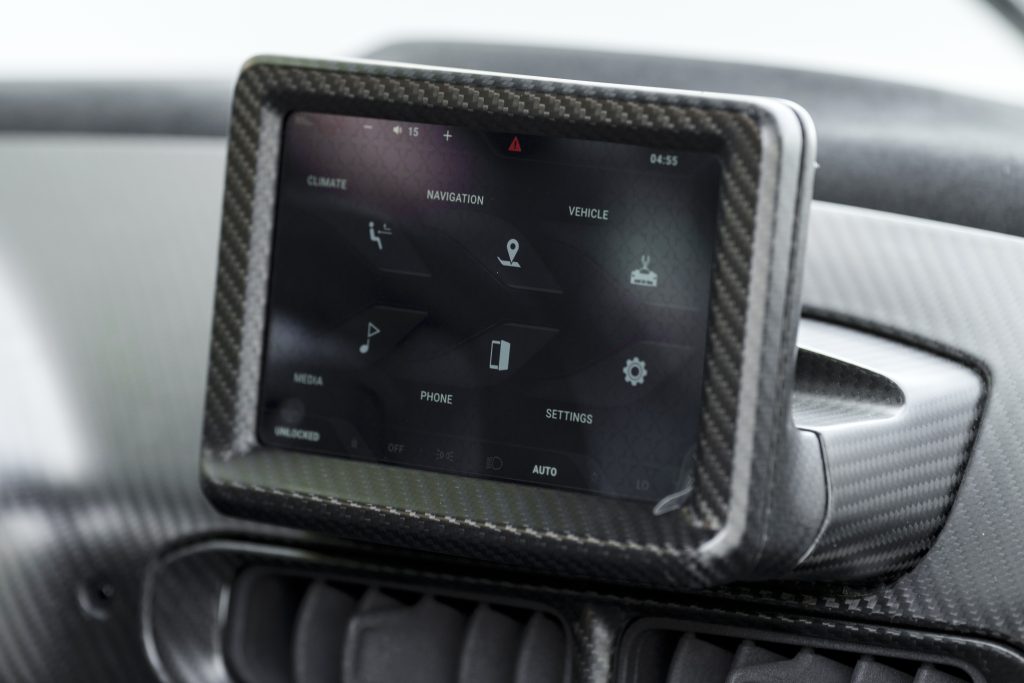
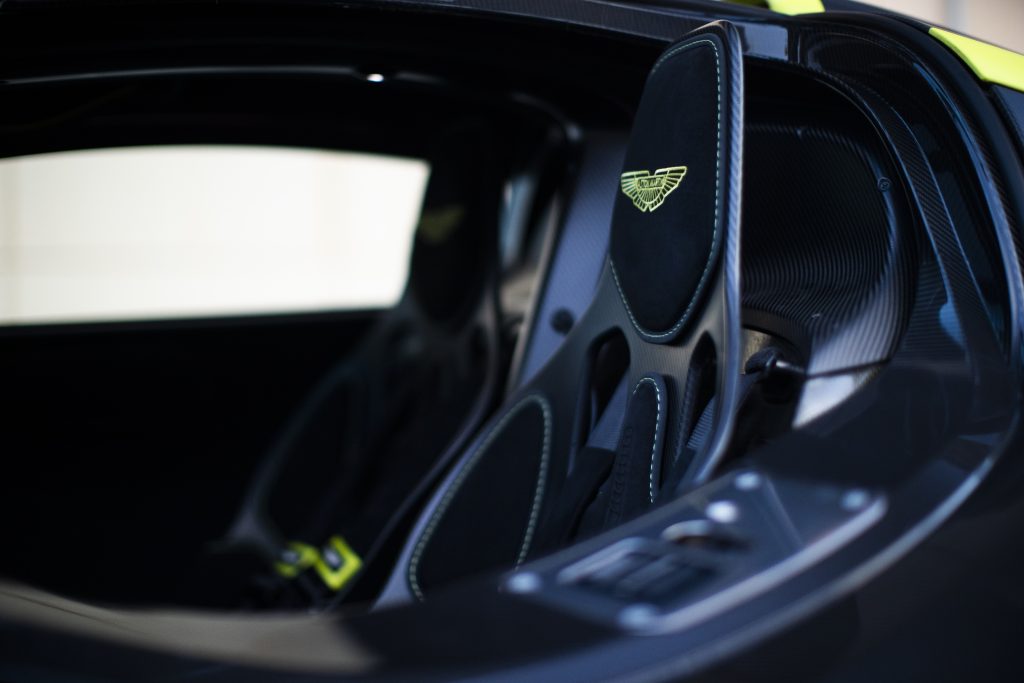
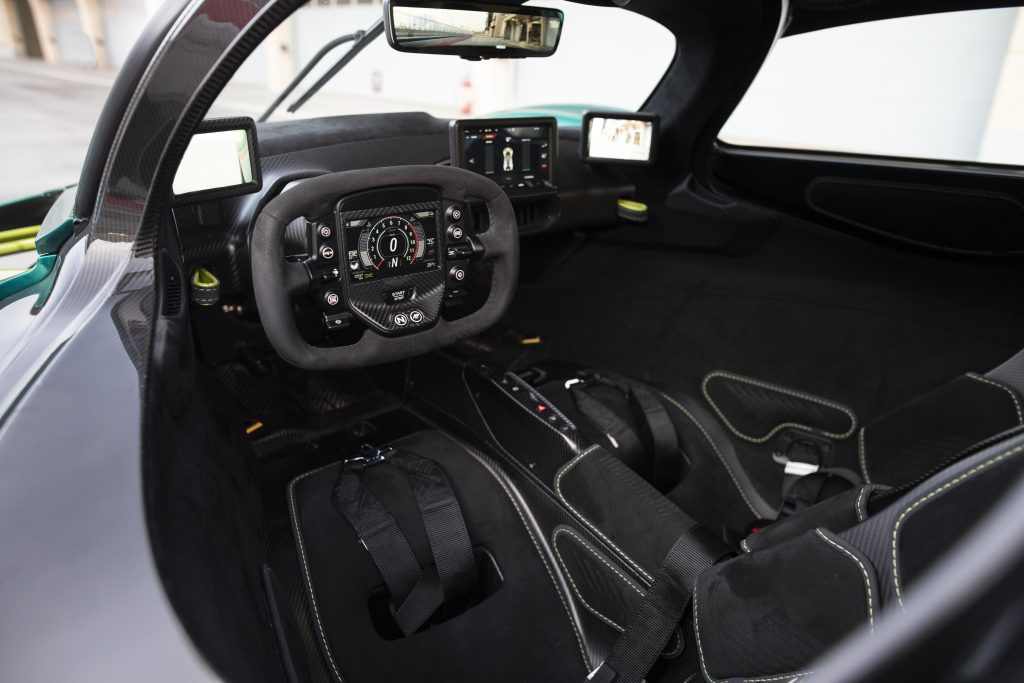
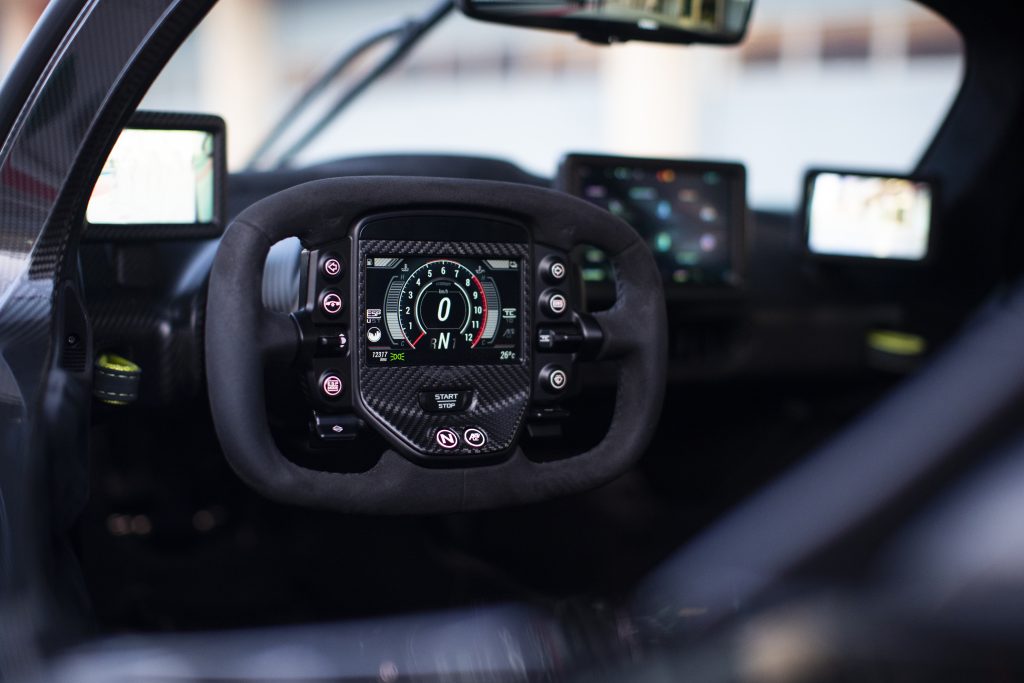
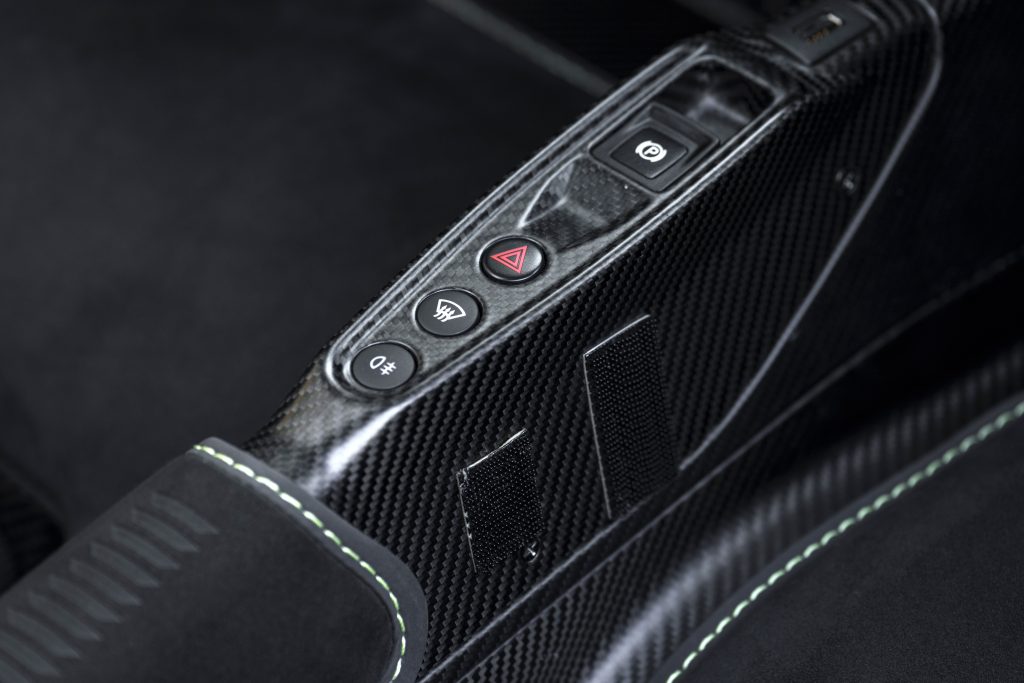
Ricardo clearly deserves huge praise too. Newey wouldn’t accept a dual clutch transmission (too big, too heavy) instead insisting on a sequential ‘box with dog rings – which adds immediacy but does away with user-friendly synchromesh – to cope with the loads of the engine. But making this work in a road car required the innovative use of an electric motor (with a battery from Rimac) to help smooth out the brutal shifts and prolong the life of the helical cut gears. This electric motor is also used for reversing and driving at low speeds where juggling the switch-like clutch would be horrible.
Then there’s the torsion bar suspension – a fully active system designed by Red Bull, with a pump for the hydraulics from an Apache helicopter. This too is a first for a road car, although Newey worked with an active system on Williams F1 cars back in the 1990s before they were banned by the Formula One’s rule makers. There is an active aero element as well, but this is largely concerned with bleeding off downforce rather than adding to it.
All mind-boggling on its own, especially when you think about the intricacies of getting each system (developed, remember, by different companies) to talk to each other and work together as a harmonious entity. If you want a number, the Valkyrie has 15817 values that can be calibrated within the active systems, according to James Manners, head of vehicle engineering for Valkyrie at Aston Martin.
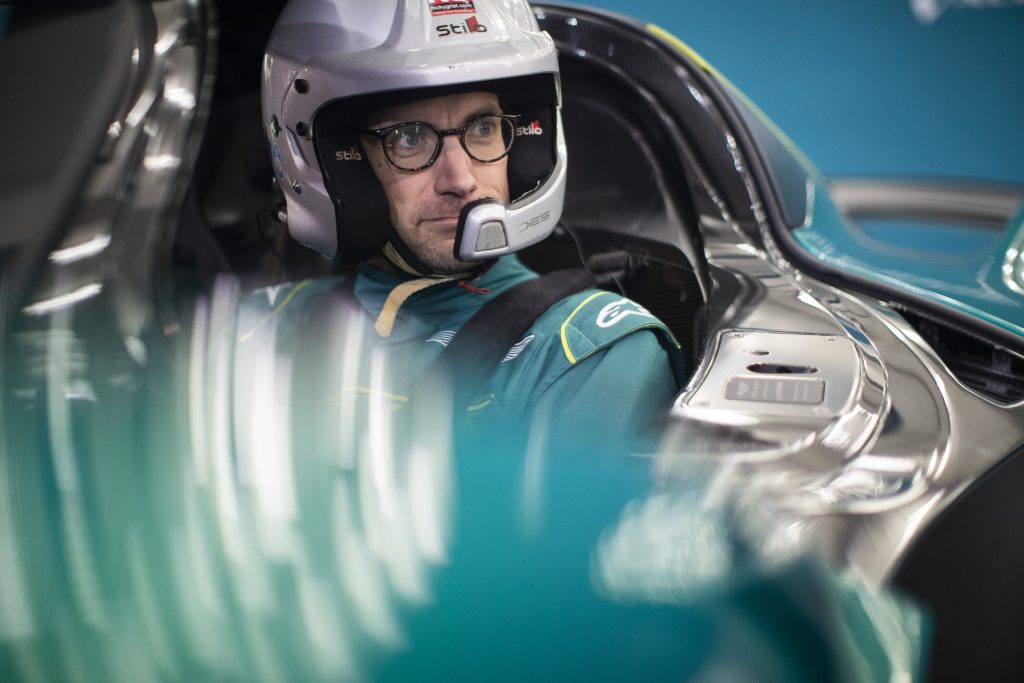
Why Aston made the Valkyrie road-legal
But, to me, that’s not even the wildest part. The really phenomenal thing is that this car has been homologated. Crash tests and all. We’ve perhaps got used to seeing supposedly track-only cars like Aston Martin’s own Vulcan or McLaren F1 GTR being road-registered and Aston could have made its life easier by producing far fewer cars (24 was the figure mooted originally) and going about things this way. The economics of the project however demanded a bigger production run and to match that with all-important customer demand the company believed the car had to wear number plates.
It resulted in things like the amazing windscreen wiper (something that Newey hadn’t envisaged needing…), which is in fact another torsion bar. It took a year on its own to develop and is made by the company that supplied the Space Shuttle. It had to be tested in a wind tunnel designed for trains as that was the only place that could throw rain at the windscreen fast enough. I also like the story about the high level brake light (not something I write very often). It’s absolutely tiny, but it was originally smaller. However, it had to be enlarged just so that an official Kitemark logo, signifying it adheres to British Standards Institute regulations, would fit on it.
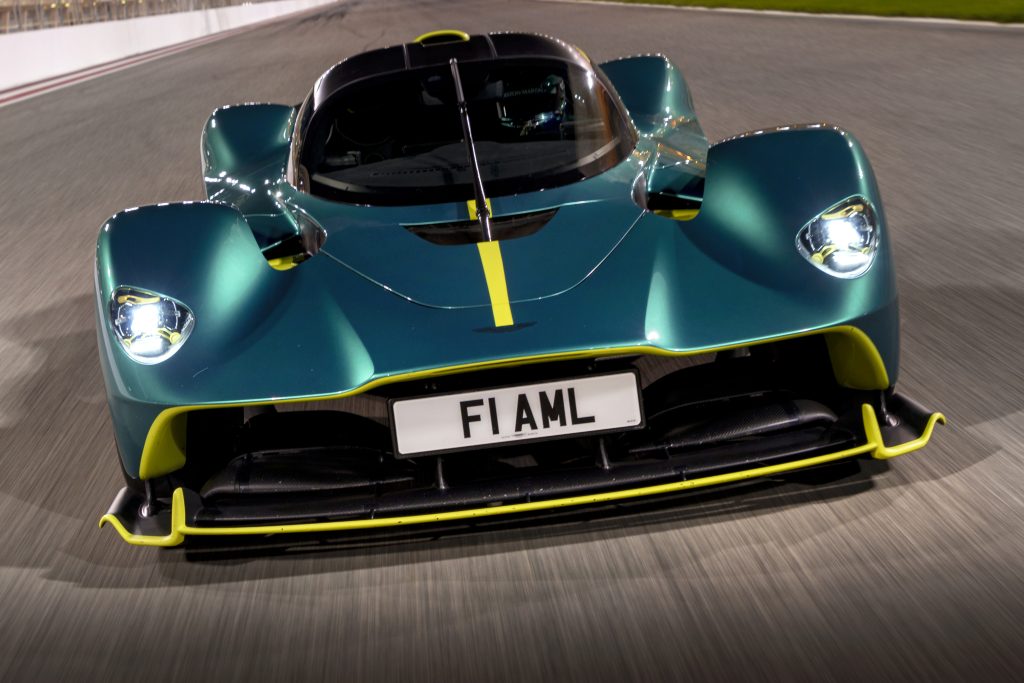
There are myriad weight-saving stories and tales of tortuous redesigns and anecdotes about arguments and then the solutions that were created. It all adds up to a car that has a fascinating mythology and a status even before you get to the driving. But the Valkyrie is a car that really should be driven…
A few weeks before the F1 circus arrived in town for its first race of the year, I climbed behind the wheel of a Valkyrie and drove down the floodlit pit lane of Bahrain’s Sakhir circuit, heels higher than my hips just as they would be in an F1 car. The steering wheel might be slightly simpler than Alonso’s, but there is the same vibe there too. Visibility is far better than you might expect from sitting in it while stationary, but boy is it a visceral experience with all the vibrations coming through the carbon tub. The first gearshift is a wake up call too, with a real physicality to it that sets your head nodding. All this before the last pit garage has passed.
As intimidating as the fundamental ergonomics are, the way the controls respond is pleasingly approachable with the pedals having a lovely progression that allows you to really meter out the acceleration and braking with confidence. You notice the left hand pedal in particular has a lovely feel to it, with plenty of well-supported travel to lean into. Steering feel is always tricky to judge on glass-smooth circuits, but what’s instantly obvious is the linear, easy way in which you can control the nose. It feels calmer in its responses than I’d perhaps feared it might.
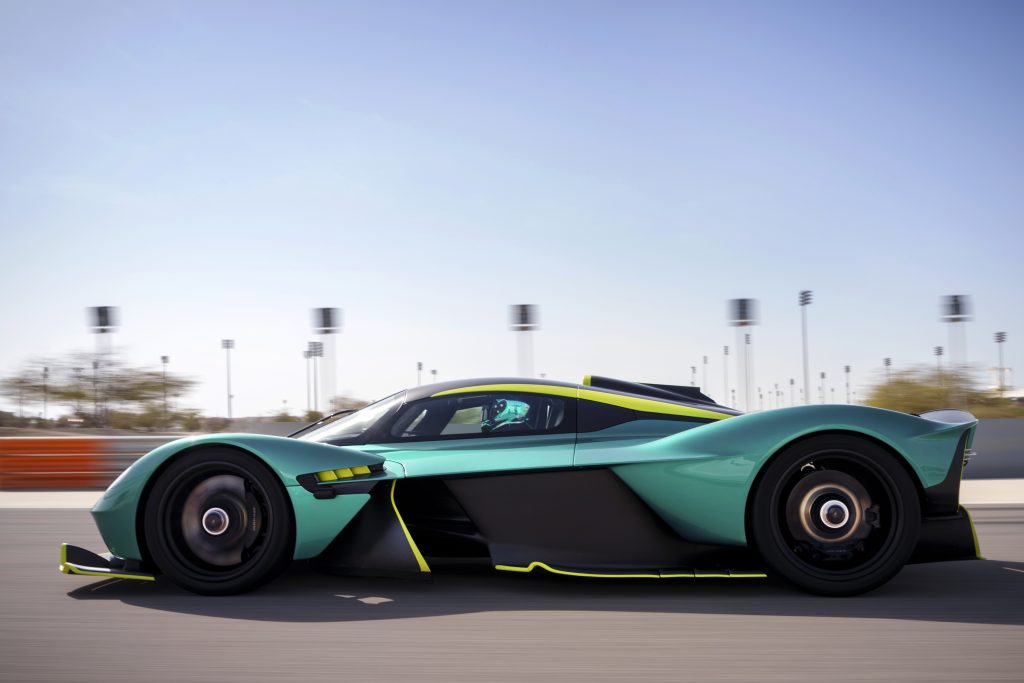
Cosworth creates an 11,000rpm masterpiece
At least it is until you open the throttle for the first time. The anger with which the V12 responds is utterly savage, 1001bhp and 575lb ft making the 325 section rear tyres feel like skinny remoulds out of the tight turn 10 as it lights them up. This rabid flare of revs is then superseded quickly by vicious acceleration, that just… doesn’t… stop. The sound inside the car is a sort of loud, guttural growl quite unlike the shrieking music that those outside are treated to, but the sheer all-consuming volume of it is so dominating – it spins to a maximum of 11,100rpm – that you almost don’t care.
Even strapped tightly to the tub and with the sanitising security of a relatively wide Circuit like Sakhir, the straight-line speed is never less than eye-wideningly impressive. Yet once a lap there is even more available if you press the ERS button on the steering wheel, which gives a palpable additional 138bhp kick from the electric motor and helps you on to the silly side of 200mph by the time you need to brake for the first gear right-hander of turn 1.
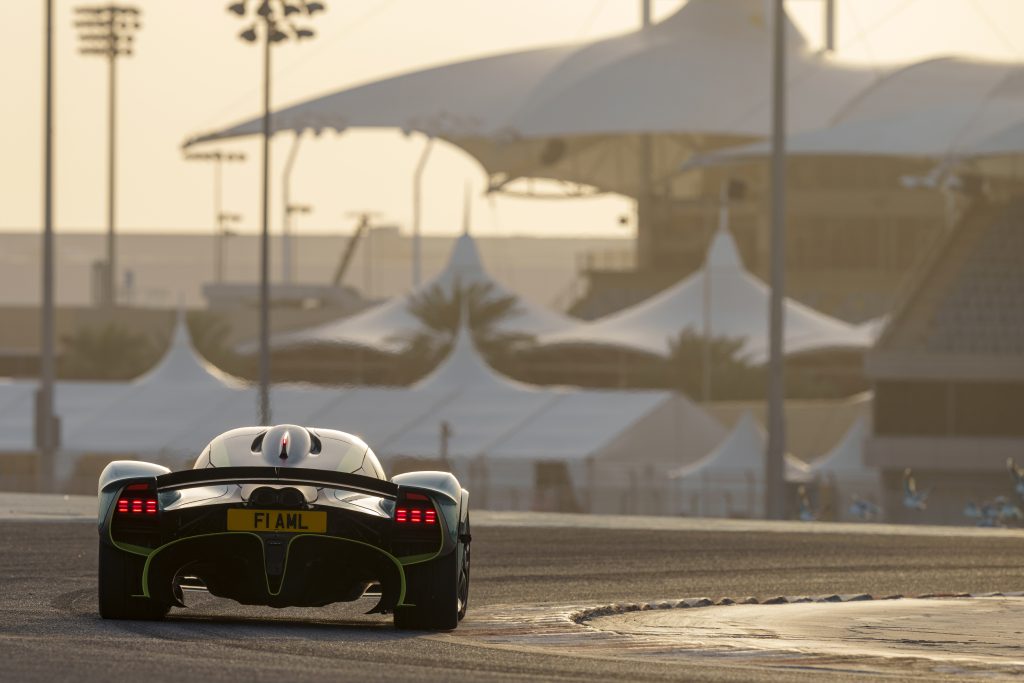
In the low speed corners you need to be delicate or prepared to lean on the systems, but in the faster corners where the downforce can get to work there is a tenacity that is both inspiring and intimidating. You know you’re travelling quickly compared to other road cars – quickly in terms of pure mechanical grip – but then you tentatively try to tighten the line halfway through a corner and discover that there is still so much more grip and speed in reserve as the car easily hugs the kerb a little tighter. It’s quite humbling if you’re not used to high-downforce cars.
For those who crave more downforce and are willing to spend additional sums on money on this Aston Martin plaything, a switch of bodywork almost doubles the downforce to 1900kg. The optional Track Pack (it’s not road legal because it would impede the sight lines required by regulations) allows the car to be even more ground-skimming and extract the most from the underbody.
But restricting this car to a track is not the point. It needs a track to extract its full potential, obviously, but it’s the fact it can be driven on the road that makes its performance so extraordinary. Unfortunately, this wasn’t something Aston Martin was willing to let us do. Yet…
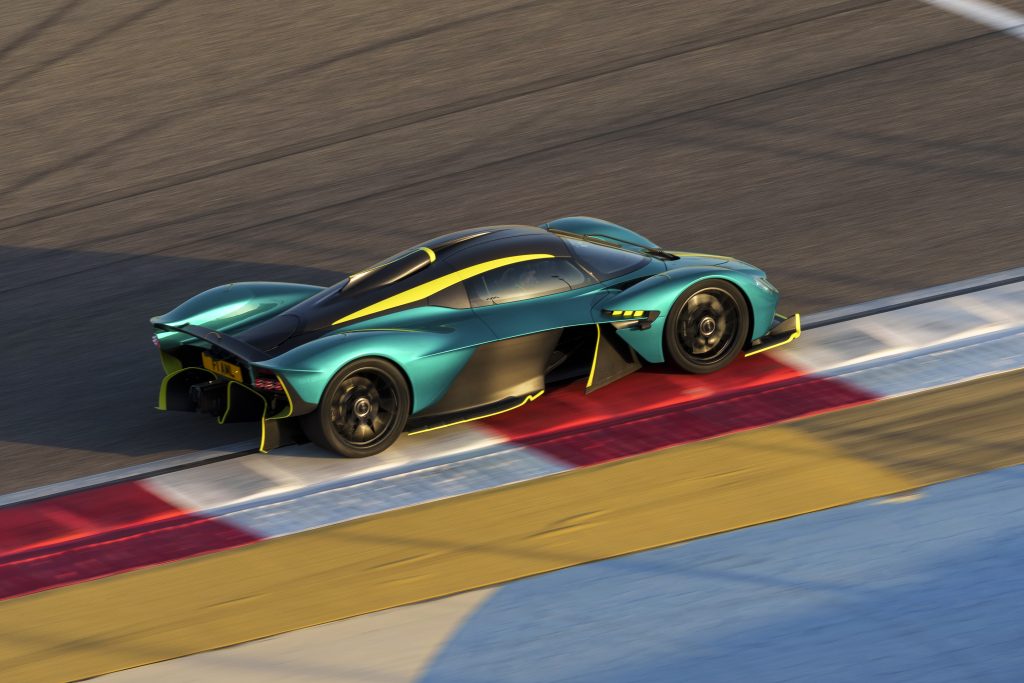
I’m pretty sure the experience of driving the Valkyrie amongst traffic would be memorable but not something you’d want to do too often. From what I felt on the track, I think the ride would be acceptable but the noice and vibration from that engine bolted directly to the tub is likely to prove tiring, quickly.
Does a road car that isn’t really suited to the road – but was engineered to jump through the myriad of rules and regulations required for road-use homologation – make sense? Arguably not. And I imagine there were plenty of times during the difficult development of the Valkyrie when none of it made much sense to Aston Martin. But sensible is overrated.
After all, the sensible thing to do if you bought a Valkyrie might be to tuck it away with delivery miles on, and return it to market when values prove too good to resist. But that’s not the right thing to do.
2023 Aston Martin Valkyrie specification
Price: £2 million
Powertrain: 6.5-litre naturally-aspirated V12 with electric motor
Gearbox: Seven-speed sequential, rear-wheel drive, e-reverse
Combined max power: 1139bhp @ 10,600rpm
Engine max torque: 575lb ft @ 7000rpm
E-motor max torque: 207Ib ft @ 500rpm
Weight (dry): 1270kg
Fuel economy: 32.1mpg
0-60mph: Less than 3 seconds
Top speed: 267mph (based on gearing)
Read more
Drive or display? 5 supercars that attracted collectors, as well as drivers
Lending a hand at Aston Martin Works
Driving the Greats: Aston Martin DB4

























The Top speed. …. is that right 267.
Mpg is pretty good..
We didn’t get to verify it(!), Dave, but Aston Martin says that the Valkyrie is geared to 267mph.